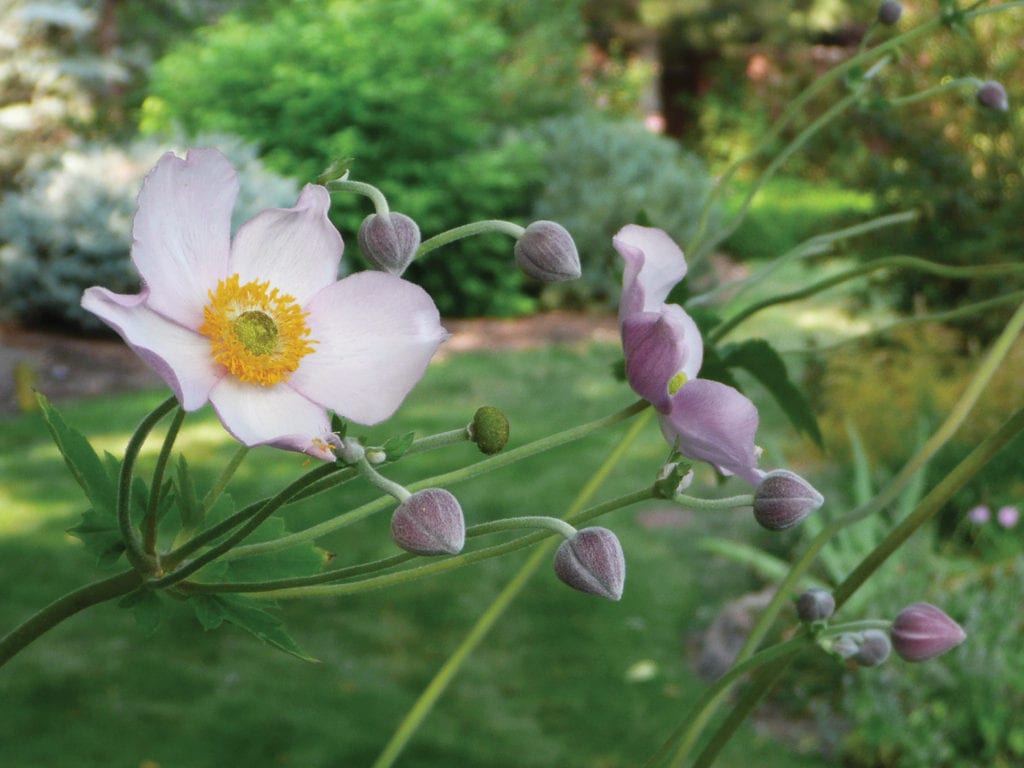
25 Jun Embracing Perennials in Your Garden
One of the many benefits of living at Tahoe is the beautiful wildflower meadows. These alpine meadows appear in virtually every open area of our mountains, thriving on water from the melting snow and many hidden streams. A dynamic ecosystem, they are a critical habitat for attracting and housing a large variety of wildlife and pollinators.
Meadows, which are comprised of a mixture of native grasses and flowers, are naturally sustainable and biodynamic, creating their own fertility through natural decomposition of old forest, native grasses, dropped seed heads and moist ground. Many of the seed-sown annual wildflowers, such as wild mustard, are nutrient rich and help replenish the soil. In fact, in the wine countries throughout the world, wild mustard is cultivated in the dormant season to replenish the soils for vineyards.
The perennial wildflowers often have massive root systems that hold the existing soils in place, allowing them to withstand drought and then flourish when more water is available.
In order to have the most sustainable and aesthetically pleasing gardens in our own yards, we can use these meadows as a guide. Some of the most desired perennials introduced for home gardens have been created from these original perennials. Plant breeders throughout the world often go out into nature to select the hardiest and most unique varieties to hybridize and make available to the general public.
Why choose perennials? You’ll create a vibrant and sustainable transition from the meadows to your home garden, and increase the natural habitat for wildlife.
As opposed to annuals, which die every year, perennials thrive and spread even during the coldest winters, only becoming fully dormant when the ground freezes. Given any warmth at all, their roots are off and running—although not to the naked eye, of course. When you’re finally ready to break your own winter hibernation and venture outside, you’ll likely notice that your perennials have doubled in size.
 A fall-blooming anemone, photo by Tova Roseman
A fall-blooming anemone, photo by Tova Roseman
You’ll recognize some of these spectacular varieties for the home garden in the smaller, native meadow varieties around Tahoe. Early spring brings us the lovely columbine, new bright colors of lupine, penstemon and ground-hugging chamomile.
If the weather stays cool, these spring flowers will continue to bloom into the summer, especially in the shadier, more protected areas of your garden, just as you’ll see the native varieties in the cooler, darker areas of the forest.
As we move into the summer heat, yarrow is among the local perennials that thrive. From the native white and cool yellow, we now have rich raspberry and paprika colors enhanced by the white sparkle of native and hybridized Shasta daisies. To further mimic the meadows, which have native grasses growing among the flowers, the use of clumping ornamental grasses planted en masse amid your flowers adds movement and sound. Ripening seed heads add color, too, and attract small birds.
Some of the tiniest meadow flowers that you may only notice when pointed out will become showy, clumping garden flowers. These small flowers are the parent of the sun-loving aster, which happily blooms all summer and into the fall, or the shade-loving anemone, which is found in moist, forested areas.
Just as the meadows create their own dynamic ecosystem and fertility, the perennials in your home gardens have connected you to that same ecosystem. When you allow the perennials to die down naturally in winter and decompose beneath the rain and snow, the plants nourish the soil and the bacteria beneath it.
This organic nutrition feeds the roots of the plants, allowing them to increase in size to create a more spectacular show the following spring. Your garden will be healthier, because it’s all part of the same nourishing cycle of life that nature has created.
Tova Roseman is a horticulturist, an organic health and wellness educator and speaker, and nationally best-selling author. Those seeking an inspirational, thought-provoking expert for a keynote address or conference workshop may contact her through her websites, tovaroseman.com or tovasgarden.com.




1 Comment